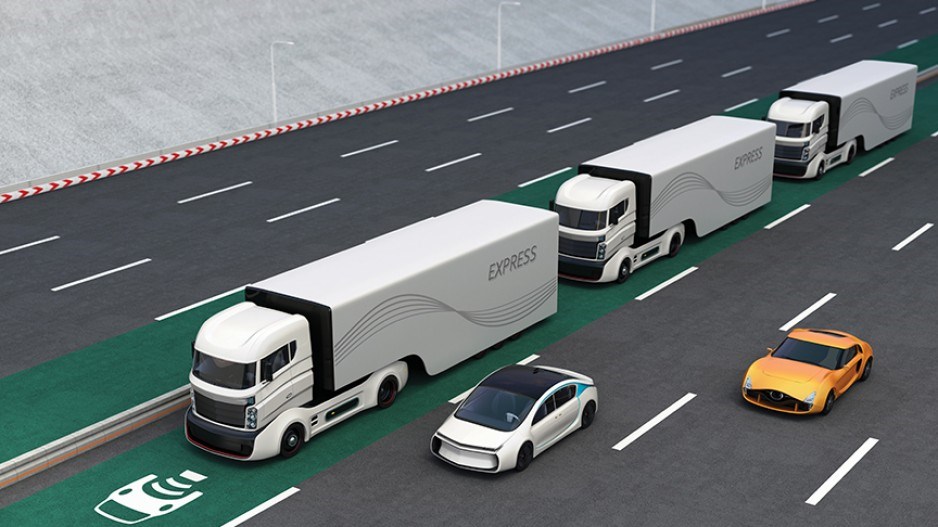The supply chain industry stands on the cusp of a massive disruption, with the biggest technological transitions to occur within the next five to 10 years, professionals in the sector say.
Of the looming changes, it is the apparently imminent transition to autonomous transport vehicles that has many in shipping and logistics businesses on edge.
Technological change, always a key theme of the annual Cargo Logistics Conference, was paramount at this year’s event, held recently at the Vancouver Convention Centre.
“Supply chain will be one of the biggest impact points [of autonomous technology], similarly industrial manufacturing and then also aerospace and defence,” said Devlin Fenton, CEO of the tech firm Go99.
Created by Surespan Group of Companies, Go99 connects truckers to shippers. In a short time, the company’s app has become a leading example of how digitization can change the supply chain through GPS tracking, telematics, robotics and more.
Fenton said it’s expected that by 2025, 11% of vehicles on the road will be autonomously driven.
“That is a huge number,” he said. “The other some 90% of vehicles [will be] semi-autonomous. That affects us in particular when you start to think about trucks. Big trucks on the road – what percentage of those will be fully or at least in part autonomous?”
With such big implications of the technology, many industry professionals at the conference tried to shed light on what the journey into the future will look like.
“How do we get from here to there?” asked Graham Warwick, technology managing editor of Aviation Week & Space Technology.
Conference speakers said the “here” that the industry occupies at the moment is a place where technology has yet to be fully realized in the operational chain.
The “there” is a place where technology such as autonomous vehicles and robotics have infiltrated the supply chain, spurring increased efficiency and profitability.
For aerospace, what lies ahead is the expanded adoption of drone technology, “and the use of large, long-range, unmanned aircrafts for routine air logistics, both internationally and also domestically,” Warwick said.
In container shipping, the future holds the use of unmanned vessels.
“I think that everybody expects that in time, much of the technology will be applied and autonomous shipping will be with us, probably, in one form or another, in the next three or four years,” said Richard Clayton, chief correspondent for Lloyd’s List.
“We are experimenting with little [autonomous] tugs, operating in Copenhagen harbour, and they have sensor perception that a human cannot match; they know everything going on around them.”
Yet there are widespread fears surrounding autonomy, Clayton said, noting how two events that affected the shipping sector last year highlighted that uneasiness.
The first was the NotPetya cyberattack in 2017 that cost Maersk Line, the world’s largest shipping container company, nearly US$300 million – Clayton said the number was closer to US$500 million – delaying cargo and wreaking havoc with order processing at over 70 ports worldwide, the company said.
The second was news that Rolls-Royce is running out of money and is condensing five business lines down to three, indicating that Rolls-Royce Marine will likely be sold off.
The events served to heighten fears that increased reliance on autonomous vehicles represents a threat to safety and job security.
It will take time to ease those fears, Clayton said.
“You don’t start with a gas carrier with a billion dollars’ worth of gas on and a hundred million dollars’ worth of ship going up a restricted waterway. You build people’s perception.”
Warwick said the general public is largely unaware of many advances that may already benefit them.
“Unmanned aviation has been around for a lot longer than people think, but it has come into the news a lot heavier because of the rapid growth in the very small drone industry.”
Often, travellers are unaware that parts of their journey are guided autonomously or controlled by an operator somewhere off-site.
Yet had those travellers been aware of the degree to which their transportation is computer-controlled, many might have had second thoughts about boarding.
“That general fear of machines seems very ingrained,” said Oliver Vincent, president and general manager of the tech company WeatherBug.




